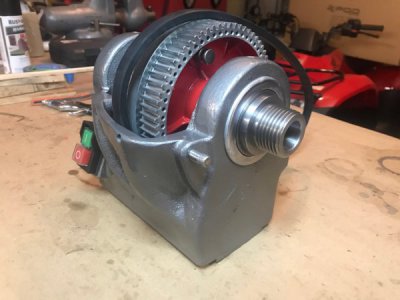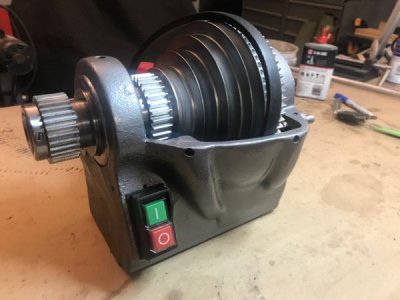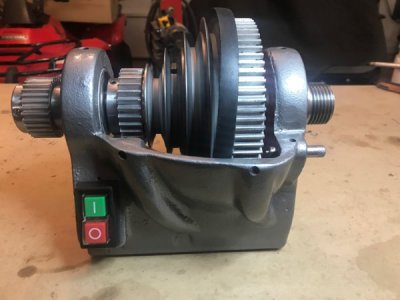As I wrote earlier, although one would think from the way in which the end float is adjusted that the cone is going to be at most a light push fit on the spindle, any number of reports indicate that isn't always the case. I would make a puller from a length of 5/8" threaded rod (UNF if you can find it), a length of structural tubing with ID just slightly larger than the left end of the spindle, a shoulder washer to fit the tubing and one to fit the right end of the spindle. and some coupling (long pattern) nuts. Or put the cone in something like a roasting bag and immerse it in boiling water for 15 or 20 minutes. Carry the pan with the bearing to the lathe, take the bearing out of the water and out of the bag with an oven mitt and slide it onto the spindle and hold it and the spindle together until it cools off and locks. Load the spacer, gear and threaded collar on the spindle. Use a dial indicator to check end float, tightening the collar a tooth at a time until it goes to zero. Then two more teeth for preload and tighten the set screws.



